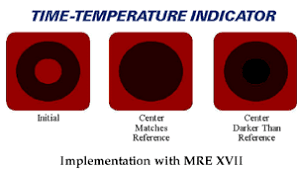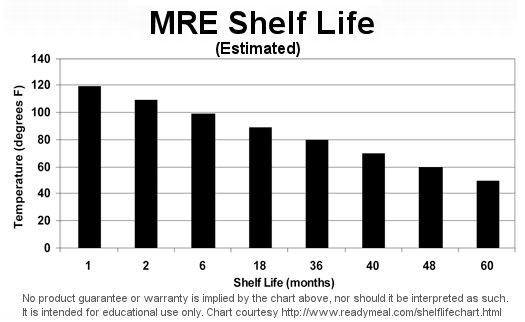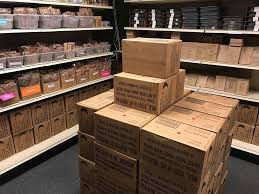What is a MRE?

MRE stands for Meals, Ready to Eat or ready to eat meals. It has the origin as a military food. Normally, MREs looked like a sealed package that is lighter and more portable than a can. MREs become increasingly popular among the survivalist for their decent shelf life. They are the go-to food source when dealing with emergency situations ranging from disasters, riots to break down of car in the middle of nowhere.
However, these emergencies are normally unexpected and unpredictable. They could happen in next year, 5 years from now, or 10 years down the road. Therefore, a valid question is asked: How long are MREs good for? The reason to this question is equally valid, as no one would like to have spoiled MREs when they are needed to come to rescue.
Now that you have an idea what an MRE is, let’s get straight down to business. You can also check out a list of the best MREs comparison here.
Related article: Military vs Civilian MREs
How long do MREs last?
In short, MREs on average has a shelf-life of three years if it is kept at 75 degrees Fahrenheit or 23.89 degree Celsius.
If you keep it in cooler conditions, MREs on average would be able to last up to 10 years.
If you are interested to know more about how we derive this conclusion, I would encourage you to read further.
We will talk about the 3 most important things you must know about MREs, before moving to the 3 most popular questions about MREs, slowly uncovering how we derive this conclusion.
Also read: DIY MRE to stockpile
3 Important Things to Know to determine how long your MREs last
Shelf life
If you are looking for straightforward answer on how long the MREs last, look no further.
On average, MRE could last for 3 years in 75° F (roughly 24°C). It is a decent shelf life, considering most of the food don’t last for more than a year. However, its lifespan could be further extended if we do it right. (Hints: Packaging and Temperature.)
Interested? Read further.
Date on the Package
Before we look at how MREs’ shelf life could be extended, we shall learn how to read the manufactured date of MREs from. To know the manufactured date of the MREs is important as it gives us a picture of how many years were left for the MREs.
If you get a US-made MRE, you will most likely notice the three information on the package:
1) Pack date and date code

The pack date is rather straightforward. But they may not appear on some MREs. The more popular way for marking a date of the production would be using a 4 Digit Julian Date code.
Taking the above picture as example, 3282 should be read in two parts. Firstly, the first digit of the code takes the last digit of the year of packaging. In this case, the 3 means 2013. Secondly, the last 3 digits of the code represents the days. In this case, 282 means the 282nd day of 2013. So, 3282 would mean the product was manufactured on the 282nd day of 2013.
You might ask, what if the 3 does not mean 2013 but the year 2003? This is a tricky question and there is no straightforward answer to this. The reason behind taking the last digit of the year instead of the last two digits was that MREs usually don’t last for more than 10 years. So, if you see a product with 3 in the year 2020, it would probably mean the MRE was produced in 2013, not 2003 and definitely not 1993! But if you are unsure, always check the food qualities and packaging before taking the food.
2) “Expiration” date
Another date you will see is likely to be 3 or 5 years later than the production date. It does not mean the MREs expired on the day. Rather, it is more like an “inspection date” over expiry date, you may treat it like a “best before” tag to remind you of the MREs. Quite often, these tags are earlier than actual food spoilage. Strictly speaking, you can still eat the food because they don’t go off automatically after the date on the package passed. But you will have to check whether it is safe to eat the MREs. Usual red flags include damaging, swelling, punctured of the packaging, bad smell, and funny taste.
3) An orange sticker

The orange mark is called a Time and Temperature Indicator, or TTI. It is a more accurate way of telling you the freshness of MRE. There are two parts to the TTI – an outer darker circle and an inner lighter circle. Ideally, the smaller inner circle should be brighter than the larger outside circle. When the inner circle is darker than the outer ring, it is very possible that the MRE has gone bad. The TTI should be fairly accurate since it reflects the effect of temperature fluctuation to the MREs.
Time and temperature
The surrounding temperature of the MREs has a direct effect of their shelf life. Generally speaking, MREs gone bad faster when the surrounding temperature is higher. Conversely, the cooler the surrounding temperature, the longer the MREs last.
The estimated MRE shelf life corresponding the surrounding temperature can be referred in the Food Shelf Life Chart below:

As could be seen from the chart, the higher the surrounding temperate, the shorter the shelf life of the MREs are. At 120 degrees F, the MREs could hardly go beyond 1 month. At around 70 degrees F, the estimated shelf life of MREs is 40 months. But, as you can see, as shelf life of MREs can be extended further when the surrounding temperature is lower. For example, storing the MREs at 50 degrees F enables the MREs to last for an estimated 5 years.
This goes to show the importance of storing the food properly. You don’t want the food to become spoilt when it matters.
3 Most Popular Questions about how to keep MREs
How do I store my MREs properly?

As you have read until this part, you should have a good idea of how sensitive the shelf life of MREs can be in different temperature. To get the best out of your MREs, storing them at the optimal and stable temperature is a must. By making sure the temperature in check, you can keep the taste and best preserve the nutritional content of the MREs. Also, a proper storage greatly reduces bacterial growth on the MREs.
There are two ways to go about in storing MREs.
Firstly, and my preferred way, is to just store the MREs in a cool and dry place. It may be the kitchen cabinet or in my study room. Also, keep the MREs away from humid places like basement or near the kitchen sink. It may seem easy, but there is a catch this. As MREs are sensitive to changes in surrounding temperature, I would advise that if you are living in a place where seasonal temperature fluctuate a lot, try to do extra measure to keep temperature of the storage area below 75° F.
If you feel insecure about the first way, you can keep the MREs refrigerated or frozen. A good refrigeration may extend the lifespan of the MREs for up to 15 years. But this not my preferred way – and I will tell you why.
First of all, MREs are not designed to withstand repeated freezing.
Repeated freezing can cause the package to stretch causing the package laminate layer to puncture, taking away the contamination factor. This increase chances of contamination which affect the shelf life. To make sure this does not happen, consider using a freezer bag to cover your MRE package during re-freezing.
Other than that, do not forget that during emergencies, power supply is most likely down, and the freezer will not function. In this case, the temperature fluctuates again, and shortens the lifespan of the MREs further.
Can I still eat a 10-year old MREs?
People often debate on whether the nutritional value and flavour of the food drops with time. You will need to make a call on that. If you ask me however, I will probably still take the food (even if it is a 10-year old MRE!), because it should still contain some calories. After all, it is only for emergency ration, just to keep me barely alive. In chaos, food choice is a luxury.
As to how long MREs really last, it really comes down to the type of the food. My observation is that entrees and desserts such as cakes and crackers last fairly long in terms of taste. But to put things into perspective, taste is always subjective.
Nevertheless, I should caution that some food may turn dangerous to consumer and make them feel sick or food poisoned. Particularly, you should avoid dairy-based and fruit-based products such as cheese spread and applesauce.
Test tasting a 10-year old MRE would be interesting.
When should I replace the MREs?
It is likely that as a survival prepper, you will be tempted to keep the MREs for as long as possible. While I have given you the lifehack to extend the shelf life of the MREs, it is always advisable to keep the MREs rotating.
Doublecheck with the surrounding temperature and the TTI to get a rough idea of how long your MREs might last. As an example, when your MREs are stored in a 75 degrees F place, you should consider checking them in the third year for any changes on the TTI.
Plus, if the package is bloated, punctured or damaged, this is a huge red flag. A bloated packaging indicated the presence of Botulinum toxin which could cause botulism to human. A punctured or damaged packaging indicated the food could be spoiled or infected with bacteria.
Conclusion
The purpose of stocking up the MREs is for emergency preparedness. So, it is ideal that we keep the MREs for as long as they could last. Although I have shared the lifespan of MREs and tips to extend the lifespan of the MREs, this does not mean that they could actually last for that long. It is always important to make your own call before consuming the food. You should check the odor and appearance of the food before taking them. Combine your judgment with the reading of TTI. After taking all considerations into account, taking MREs should be safe and enjoyable.


My favorite part of an expired MRE is usually the dry vacuum-sealed cookies and the dry vacuum-sealed crackers. Those may have a strong “old” cracker scent, however, in general the taste was usually very palatable (and did not leave a burning sensation in my throat like normal saltine crackers that have been open for too long). I would use those myself, especially if I were to be in an emergency situation. The oldest crackers I ever ate from an MRE had been manufactured 11 years prior to the date I ate them.
For dry crackers and cookies, I always STOP, LOOK, LISTEN, SMELL, and SAMPLE, before I eat them though:
-STOP to check the package. read the expiration date; if I am uncertain how to read the date stamped on the package of the MRE or the inner containers, then contact the manufacturer to find out its manufacture date and expiration information. also pause to check the contents of the package/s so I know what I am eating, and to be sure the product is not primarily composed of something that might spoil quicker than just a cracker (a plain cracker i would always be inclined to try to eat it. if it was a vegetable cracker made with dried vegetables, i might eat it; if it contained egg or egg powder or cheese or cheese solids, i might not eat it, due to the nature of eggs and cheese spoiling more quickly, etc).
-LOOK at the package to be sure there are no tears or rips, carefully examine any seams to be sure there is nothing leaking, and that there is no dried food matter around any part of the seam (from a previous leakage). also check to be sure the package does not appear to be blown up like a balloon, gently squeeze the package to see if it feels like there is air inside (generally there should be no air in there! and the package should never be swelled!)
-LISTEN when I rip the package open, I hold it near my ear to LISTEN (it should make a very quiet “pfffft” sound, if it has not lost its vacuum seal, as if someone was gently blowing air near my ear)… and
-SMELL the opened package, and be sure nothing smells rancid or rotten. For the dry crackers and cookies, I will endure a slight stale smell, and I might eat those. However, if it is TOO stale smelling, I will not eat it. If there is any danger of the food potentially causing sickness, I will avoid eating it.
-SAMPLE an extremely tiny bite first, just a tiny nibble, just enough to be sure the food has no bad taste. If it tastes bad in any way, I would spit it out and rinse out my mouth well with water a few times.
But if friends are throwing away expired MRE’s I always would ask for the crackers and cookies. Because so far, I have always enjoyed them when broken into pieces and topped with a bit of hummus or peanut butter.
[CAUTION about peanut butter though: In the past, there were a lot of peanut butter manufacturer recalls, and there were some MRE’s recalled due to contaminated peanut butter. So, when in doubt, I will never eat the peanut butter that is included in an MRE, unless I am able to verify whether that particular packet might have been recalled because of contamination with Salmonella bacteria. Even in an emergency situation, I myself would likely not feed unverified MRE peanut butter to elderly people, children, or people with any sort of compromised immune system.]
Disclaimer: I am not an expert; please do not take my advice to be professional; please do not rely on my advice; this is only my personal opinion.